Fifth generation Japanese stealth: soon in the skies of the planet
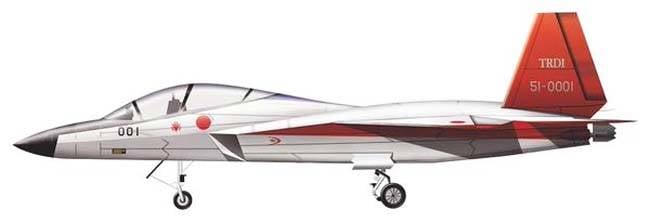
ATD-X, aka X-2, aka Shinshin in the brand red and white livery. Source: airwar.ru
Initially it was supposed to lift the plane into the air in the 2000 year, then this term was pushed back to the 2007 year, and then it was renamed ATD-X, adding Advanced (prospective). In many respects, the postponement is associated with the Mitsubishi F-2 project, which is an enlarged “American” F-16 with a large area and wingspan. By the way, the F-2 was the first in the world fighter with the AFAR locator of its own Japanese design - J / APG-1. The Japanese worked together with Lockheed Martin and by the beginning of 2016, they were able to put such machines into 64. So, ATD-X was supposed to change the F-2 in the ranks of the self-defense forces of Japan somewhere in the 2027 area of the year. Resentment at the United States for refusing to share technology, and its own pride, gave the Japanese an excuse to call the project another word - Shinshin or "the spirit of the nation." In 2000, the first aerobatic display stand appeared to simulate new air combat concepts, and since 2002, the Japanese are working on a self-restoring adaptive aircraft control system. The system is called SRFCC (Self Repairing Flight Control Capability) and provides controllability of the aircraft for combat damage or malfunctions. Control signals are transmitted via a noise-resistant fiber-optic channel - fly-by-light technology.
The effective dispersion surface of the new fighter had to be measured in France at the SOLANGE test site in Bruz - the Japanese have no such conditions. For this, the 1: 1,33 model was made and, in complete secrecy, in September-November, the 2005 of the year was “run in” on a French test bench. But the aerodynamics of the future fifth-generation fighter have already been investigated in Japan at the Hokkaido test site on a radio-controlled model of the 1 scale: 5. But in 2008, a crisis broke out and the Japanese Ministry of Defense cut the budget for ATD-X right 7 times, which could not but affect the pace of development of the machine. And only the following year, the money came in an acceptable amount and this allowed the construction of the first demonstration aircraft to begin. The contract for its construction was signed at the end of 2011 of the year. They decided to assemble the car with the entire Japanese world - the fuselage and final assembly lay on the mentioned MHI, Fuji Heavy Industries was in charge of the wing consoles, and Kawasaki Heavy Industries was entrusted with the cockpit. The final specimen is 14,2 m long, its wingspan is 9,1 m and its height from the landing gear is 4,5 m. The empty Shinshin weighs from 9000 to 9700 kg (the data differs), and at maximum, 13000 kg.
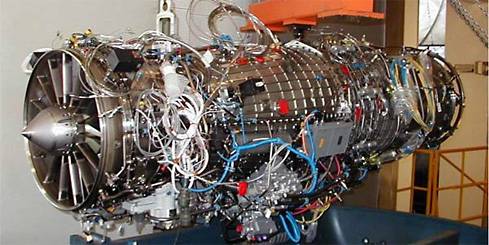
The XF5-1 engine used on the X-2 prototype. Obviously, this power unit does not meet the requirements for technology for fifth-generation fighter jets. Source: wikipedia.org
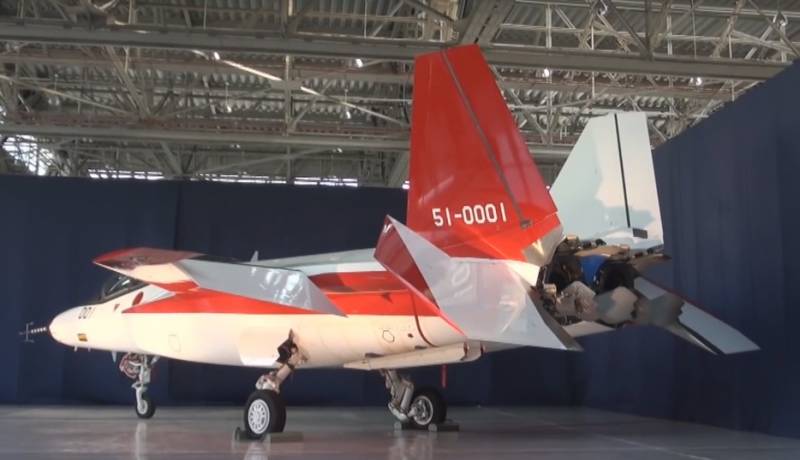
The photo shows the thrust vector control thrust engines. This solution is certainly temporary - it can not be combined with stealth technology. Source: airwar.ru
It is argued that the proportion of composites in the design can reach 30%. The first car without the radio-absorbing cover of the hull so far - only the cockpit canopy has it. But the military leadership of the Japanese Ministry of Defense claims that stealth technology for the Land of the Rising Sun is quite capable of and ATD-X will (attention!) Have an EPR "less than that of a bird, but more than that of an insect." The aircraft has two engines of the mentioned type XF5-1 with the 5000 afterburner kgs with a three-stage low pressure compressor, a six-stage high pressure and two low and high pressure turbines. The thrust vector of the engine is deflected by three planes behind the nozzles of each XF5-1. The ceremonial "first riveting" of the fuselage frame was conducted at the MHI plant in Tobishim 28 in March 2012, in the presence of representatives of the Ministry of Defense and TRDI managers. Two years later, the plane in a bright red and white livery with a tail number 51-0001 left the MHI shop in Komaki, in Aichi Prefecture. At the very beginning of 2015, problems with the engine management software started and the first flight was shifted by almost 12 months. However, this deadline was not met - 28 January 2016, the plane was only officially presented to the press (then it was given the name X-2), taxiing and jogging began in February 2. The first acceleration to the speed of separation from the band took place on April 12.
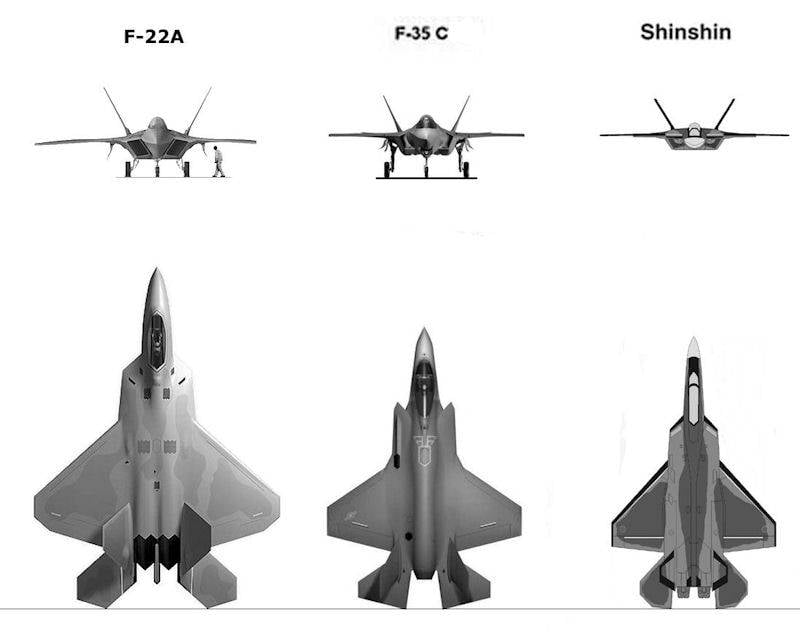
Comparison of contours and sizes of Shinshin with closest competitors. Source: globalsecurity.org
On 8.47 in the morning of 22 on April 2016, a test pilot, whose name was not made public, lifted into the air from the runway of the airfield in Nagoya an experimental fifth-generation fighter X-2. As usual in such cases, the flight took place at the “minimum settings” with the chassis released at 370 km / h and without thrust control of the engines. Home plane after takeoff did not return, and after 26 minutes landed at the Japan Self-Defense Air Force Base in Gifu. Nothing unusual happened during the flight, only a few observers noted a very short X-2 run.
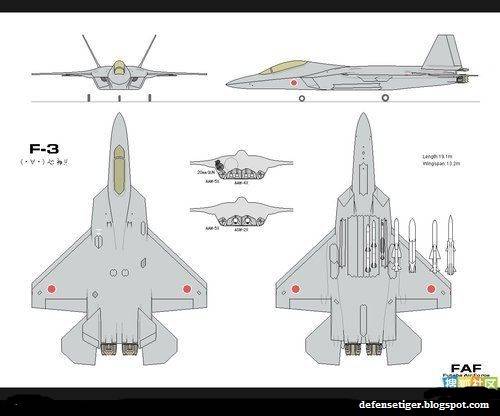
Sketch of the draft F-3, presumably, the serial version of the X-2. Source: defenseforumindia.com
The future of the Shinshin X-2 Japanese leadership connects with several key aspects. The first - the formation of EPR, less than that of similar enemy aircraft. In this connection, the Japanese are actively working on new radio absorbing materials and new air intakes. The second is the development of the next-generation radar capable of detecting a subtle object. The third aspect is the principle of cloud-shooting or “cloud shooting”, which allows strikes based on external target designation sources (AWACS or other fighters). The fourth is the development of a new engine with smaller dimensions and the ability to fly to supersonic cruise mode, which X-2 is not able to do yet.
According to available information, the engine, radar and stealth technology is now in the process of development and should be ready for 2020 year. Until the end of 2018, the Japanese will reflect on the development of a new fighter based on the Shinshin under the symbol F-3, and the first flights of this prototype are planned for 2024-2025. In the most optimistic version, the fifth generation car should go to the 2027 year, however, given the “quickness” of the Japanese in this matter, it is hard to believe. As an option, the Japanese can by that time cooperate with the Americans (read Lockheed Martin) in creating a joint plane with their own developments. Will Japan be able to arm themselves with their own new fighters by the time the “friends” in the district are already equipped with fifth-generation vehicles? Or, given the recent leadership doubts about the feasibility of the ATD-X project, will they remain technologically dependent on the United States?
The article used materials from the periodical "Rise".
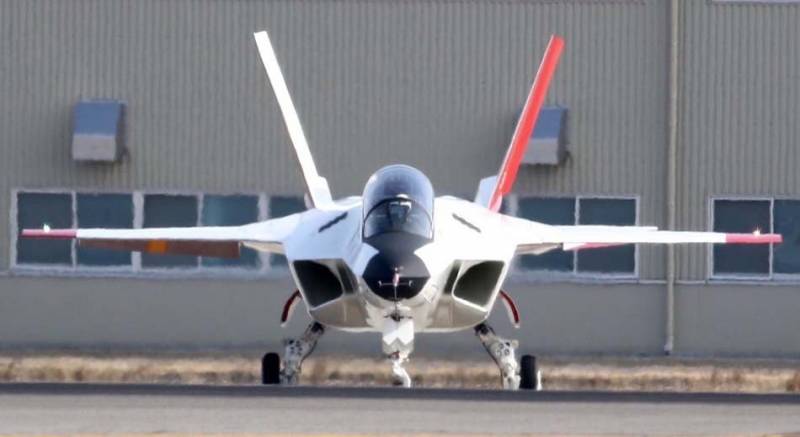
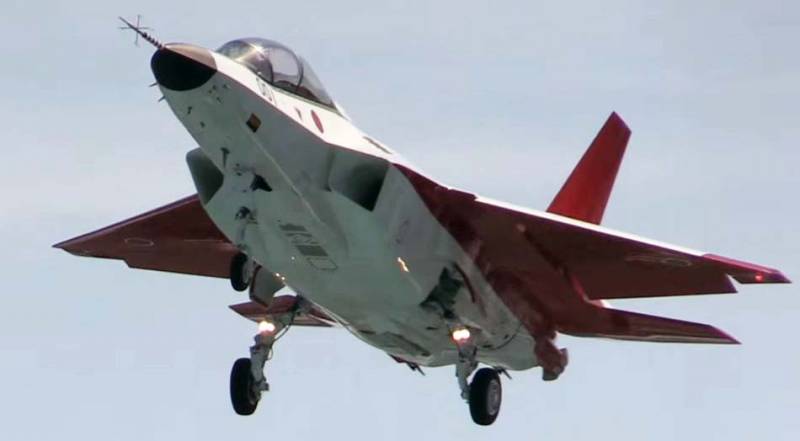
Information